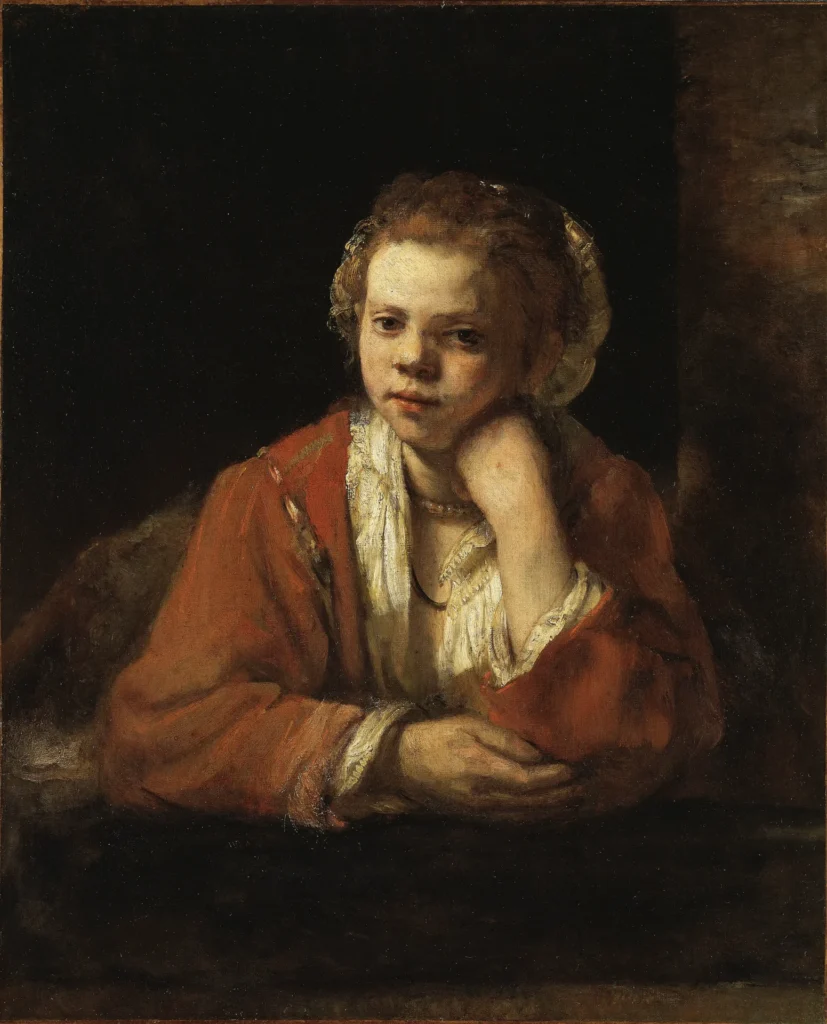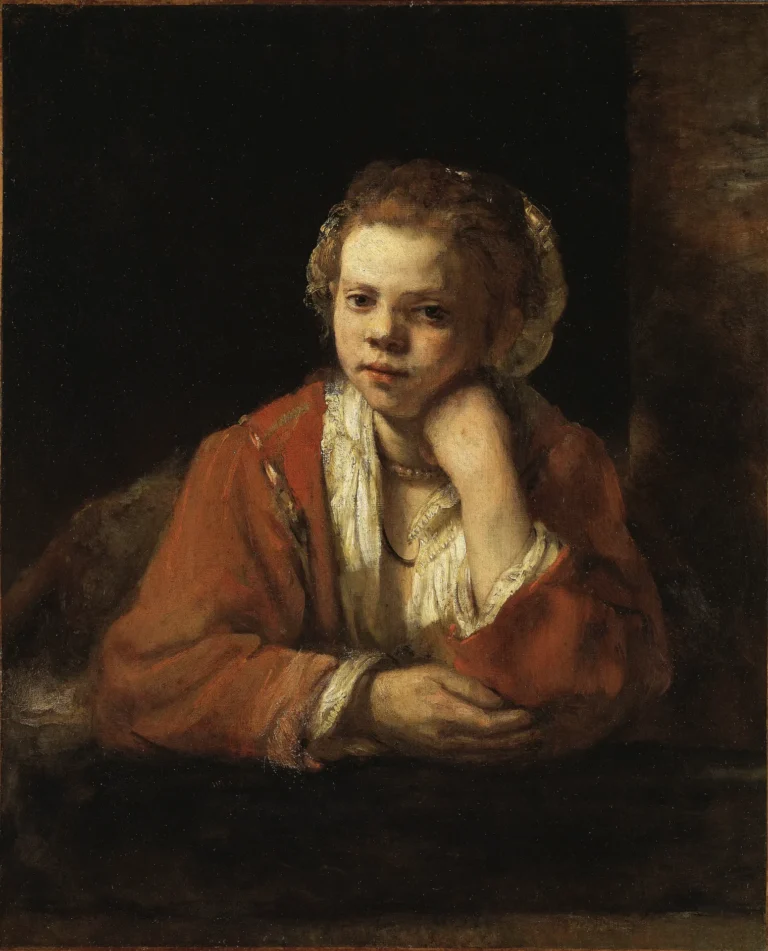The Kitchen Maid
Rembrandt van Rijn's The Kitchen Maid is a captivating oil painting created in 1651 that masterfully depicts a young girl resting in a peaceful moment. Dressed in a dull red jacket with a golden-yellow cap, the maid leans against a window sill, her serene pose and the soft lighting illustrating Rembrandt's exceptional use of chiaroscuro. The warm palette reinforces the intimate setting of a bustling kitchen, while the girl's jewel-toned necklace hints at her background, suggesting layers to her character that invite intrigue.
Year 1651
About the Artwork
Created during the height of the Dutch Golden Age, The Kitchen Maid emerges as a brilliant manifestation of Rembrandt’s artistic genius. Renowned for his complex portrayals of human emotions, Rembrandt imbues this painting with a sense of intimacy, as the viewer is invited into a private moment of the kitchen maid's daily life. Historians speculate that the model may have been known to the artist, hinting at a deeper narrative behind the image. Through this masterpiece, the everyday life of a seemingly anonymous figure is transformed into a timeless work of art, demonstrating that even the mundane can possess profound beauty. Over time, this artwork has passed through distinguished owners, from Roger de Piles to King Gustavus III of Sweden, each adding to its rich history.
Did You Know
Rembrandt van Rijn is often hailed as one of the greatest painters in European art history, influencing generations of artists with his innovative use of light and shadow, known as chiaroscuro. His ability to capture human emotion has set a standard in portraiture, making his works timeless.
Although the young girl in The Kitchen Maid remains unidentified, art historians have speculated that she may have connections to Rembrandt himself, possibly being a servant or acquaintance. This ambiguity fuels the intrigue surrounding the work and elevates the maid’s status from a mere depiction of labor to a subject of sympathetic resonance.
The Kitchen Maid stands as a cultural artifact of the Dutch Golden Age, representing the societal roles of women during the 17th century, often confined to domestic duties. This painting reframes the servant’s life with dignity and depth, inviting viewers to reflect on the complexity of social status and personal identity.










